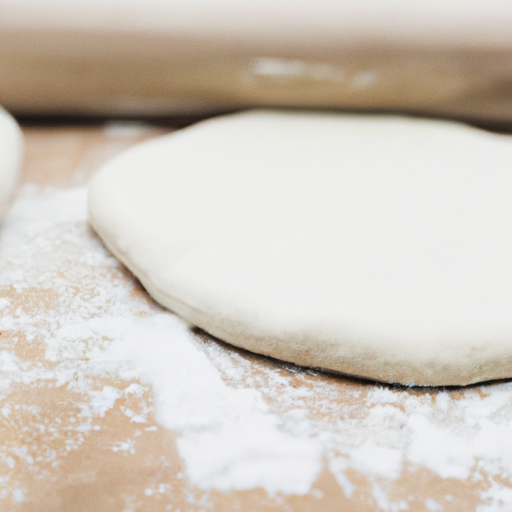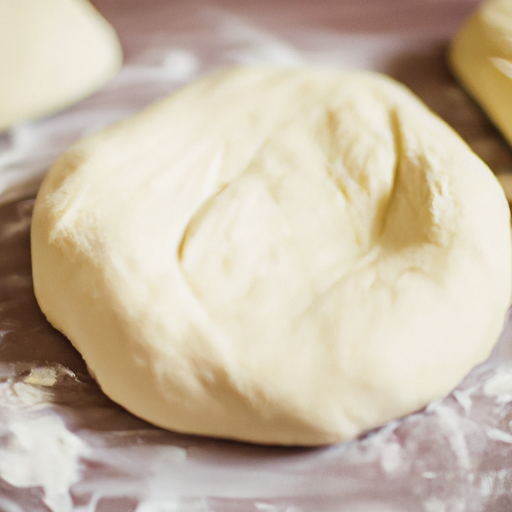Curious about the optimal amount of time to let your pizza dough sit out before using it? Look no further! Pizza Dough’s Perfect Pause Revealed provides all the essential details you need to know. With factors like ambient temperature, yeast amount, and water temperature, you’ll learn that pizza dough can typically sit out for about four hours without over-proofing. However, if you prefer a longer proofing time, cold water and less yeast can extend it to 24-48 hours when stored in the fridge overnight. Keep in mind that over-proofing can lead to a loss of bubbles, taste, smell, and structure, particularly for doughs containing eggs and dairy products. But don’t worry, even if your dough is slightly over-proofed, it can still be used to make a fantastic pizza. Find out more about avoiding over-proofing and unleashing the perfect potential of your dough in this enlightening article.
Use this to get your pizza dough perfect!
Factors Affecting Proofing Time
Proofing time is an important step in the pizza-making process as it allows the dough to ferment and develop its flavor. However, this time can vary depending on several factors, including ambient temperature, yeast amount, and water temperature.
Ambient temperature
Ambient temperature refers to the temperature of the surrounding environment where the dough is being proofed. The yeast in the dough is most active and ferments the quickest at around 75-80°F (24-27°C). If the ambient temperature is higher than this range, the proofing time will be shorter. Conversely, if the ambient temperature is lower, the proofing time will be longer. It is important to note that extreme temperatures, whether too hot or too cold, can negatively impact the yeast’s performance and affect the overall quality of the dough.
Yeast amount
The amount of yeast used in the dough has a direct impact on the proofing time. Yeast is responsible for fermenting the dough and creating air pockets, which give the pizza crust its desirable texture. Using less yeast will result in a slower fermentation process and, subsequently, a longer proofing time. Conversely, using more yeast will speed up the fermentation process and shorten the proofing time. It is essential to find the right balance of yeast for the desired proofing time and flavor development.
Water temperature
Water temperature plays a crucial role in activating the yeast and promoting fermentation. Yeast thrives in warm water, typically between 95-105°F (35-40°C). If the water temperature is too cold, the yeast will become dormant, and the proofing time will be significantly extended. If the water temperature is too hot, it can kill the yeast, preventing fermentation altogether. Finding the ideal water temperature is essential for achieving the desired proofing time and optimal dough development.
Use this to get your pizza dough perfect!
Extended Proofing Time
Sometimes, you may want to extend the proofing time to develop a deeper flavor and texture in your pizza crust. There are a few methods to achieve this:
Using cold water
By using cold water instead of warm water, you can extend the proofing time of the dough. Cold temperatures slow down the fermentation process, allowing the flavors to develop more slowly and intensify over time. This method is particularly useful if you want to achieve a more complex and robust flavor profile in your pizza crust.
Using less yeast
Using a smaller amount of yeast in your dough recipe can also extend the proofing time. Since yeast is responsible for fermentation, reducing the amount of yeast slows down the fermentation process, leading to a longer proofing time. This method gives the dough more time to develop its flavors and creates a more nuanced and well-rounded pizza crust.
Storing the dough in the fridge overnight
If you have the time and patience, storing the dough in the fridge overnight can significantly extend the proofing time. The cold temperature of the fridge slows down the fermentation process, allowing the dough to develop flavors and textures more slowly. This method is useful when you want to prepare the dough in advance and have it ready for baking the next day.

This image is property of images.unsplash.com.
Consequences of Over-Proofing
While it is important to give your dough enough time to proof, over-proofing can have negative consequences on the final result. Here are some potential issues that may arise from over-proofing:
Loss of bubbles
When dough is over-proofed, it can lose its air bubbles, resulting in a dense and flat pizza crust. The air pockets created by the yeast during fermentation contribute to the light and airy texture of a good pizza crust. However, if the dough is left to proof for too long, the yeast exhausts its food supply, and the air bubbles deflate, leaving the crust without its desired structure.
Loss of taste and smell
Over-proofed dough can also lose its flavor and aroma. Fermentation is what gives pizza dough its distinctive taste and smell, and if the dough is over-proofed, the yeasty flavors can become muted or even disappear altogether. This can result in a bland and uninspiring pizza crust.
Loss of structure
Another consequence of over-proofing is the loss of structure in the dough. Over time, the gluten strands in the dough break down, leading to a weaker and less elastic texture. This can make it difficult to stretch and shape the dough properly, resulting in a misshapen and uneven pizza crust.

This image is property of images.unsplash.com.
Dough with Eggs and Dairy Products
If your pizza dough recipe contains eggs and dairy products, it is not optimal to let it sit out overnight. These ingredients can spoil if left at room temperature for an extended period, leading to potential food safety concerns. It is best to store dough containing eggs and dairy in the refrigerator to prevent any risk of bacterial growth.

Preventing Over-Proofing
To prevent over-proofing and ensure the best results for your pizza crust, here are some measures you can take:
Keeping the dough in the fridge
As mentioned earlier, storing the dough in the fridge can significantly slow down the fermentation process and extend the proofing time. This method is particularly useful if you want to prepare the dough in advance or if you live in a warm climate where dough tends to proof quickly. By refrigerating the dough, you have better control over the proofing process and can achieve the desired flavor and texture.
Using less yeast
By reducing the amount of yeast in your dough recipe, you can slow down the fermentation process and extend the proofing time. Using less yeast also allows for a more gradual development of flavors in the dough, resulting in a more complex and well-rounded pizza crust. Experimenting with different yeast quantities can help you find the perfect balance for your desired proofing time and flavor profile.
Wrapping the dough to prevent drying
To prevent the dough from drying out during the proofing process, it is essential to keep it properly wrapped. Cover the dough with plastic wrap or use a damp cloth to create a humid environment that maintains the dough’s moisture. This prevents the dough from forming a dry crust and helps it retain its elasticity and structure throughout the proofing time.

Using Slightly Over-Proofed Dough
While over-proofing is generally undesirable, slightly over-proofed dough can still be salvaged and used to make a fantastic pizza. The crust may have a more pronounced, tangy flavor and a slightly denser texture. This can be particularly desirable for those who enjoy a chewier crust. Additionally, the dough may develop a beautiful color and a crispier exterior when baked. So don’t fret if you accidentally over-proof your dough, as it can still result in a delicious and unique pizza experience.
In conclusion, understanding the factors affecting proofing time and their impact on the dough is crucial for achieving the perfect pizza crust. By considering ambient temperature, yeast amount, and water temperature, you can control the proofing time and create a dough that is flavorful, airy, and structurally sound. Remember to prevent over-proofing by using techniques such as cold water, reducing yeast, and storing the dough properly. And if you do happen to over-proof your dough, embrace the opportunity to experiment and create a pizza with a distinct character. Happy pizza-making!